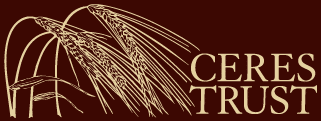Potential for use of perennial grasses as organic, dual purpose forage–grain crops in Michigan
Graduate Student: Sienna Tinsley, Michigan State University, Department of Plant, Soil, and Microbial Sciences
Major Professor: Dr. Sieglinde Snapp, Professor of Soils and Cropping System Ecology, W.K. Kellogg Biological Station
Collaborators: Dr. Santiago Utsumi, Dr. Diana Stuart, Dr. Dan Brainard, Dr. Laura Schmitt-Olabisi, Dr. Steve Culman, John Green, Mark Freedman, Christine Sprunger
View/Download Full Report in PDF Format
Summary:
This project is an investigation to determine the effect of forage harvest on growth, regrowth, and grain production of two novel perennial genotypes. Perennials offer many environmental benefits, such as erosion control (Ewel, 1999; Glover et al., 2010; Jackson, 2002; Bell et al., 2010), decreased nitrate leaching (Culman and Snapp, Unpublished data), and improved soil quality (Franzluebbers et al., 2000; Dalal and Chan, 2001), as compared with annual species. In addition, perennial forages such as these may extend the grazing season, which is extremely desirable for organic farmers in Michigan.
We conducted a field experiment testing five treatments: fall planted, uncut perennial wheat; fall planted, cut perennial wheat; fall planted, uncut intermediate wheatgrass; fall planted, cut intermediate wheatgrass; and spring planted, cut perennial wheat. Cut plots were harvested for forage each spring just before stem elongation and all plots were harvested for grain and stover in late summer each year. Spring planted plots were only harvested in 2012. In order to track growth, we made weekly plant height, growth stage, and leaf area index (LAI) measurements, biweekly tiller and leaf counts, and periodic (three times per year) biomass measurements. We evaluated postsexual cycle regrowth each year by determining the percentage of plants that died each fall. We also measured the amount of spring forage, grain, and stover harvested each year, as well as quantifying the quality of spring forage and stover through neutral detergent fiber (NDF), acid detergent fiber (ADF), and in vitro dry matter digestibility (IVDMD) analyses.
Overall, we found that perennial wheat produced more than twofold higher grain yields than intermediate wheatgrass. Forage production was primarily made up of stover at grain harvest, and substantially higher amounts were produced by intermediate wheatgrass. In year one, perennial wheat produced equivalent forage to intermediate wheatgrass, but this was not the case in year two. A major challenge with perennial wheat was that it was less able than intermediate wheatgrass to initiate late season regrowth, and thus maintain perenniality. Cutting regime did not initially affect plant growth, indicating the potential to use both crops for dual purposes (forage and grain). In the second year of cutting, during which the weather was very dry, there was an apparent reduction in regrowth among plants that were cut for spring forage. Overall, intermediate wheatgrass shows potential to be a robust perennial grass that produces forage under Michigan weather conditions, although selection for higher grain yield is clearly required if this new crop is to be a dual purpose producer of grain and forage.
